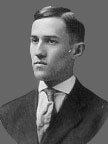Wednesday 22 February, 2006, 11:57 - Spectrum Management
Looking through the statistics which highlight the phrases people have typed into various search engines in order to find this site showed that several people had found it by typing the words "bandwidth of stereo fm broadcast". However, this isn't something that's really discussed in detail so the time has come to rectify that situation.First off, the bandwidth of an amplitude modulated (AM) signal is really easy to calculate. Modulating a radio frequency (RF) carrier with an audio frequency (AF) signal which has a highest audio frequency at B kHz produces a radio signal with a bandwidth of 2B kHz (i.e. twice the highest audio frequency). There are a number of variants of AM including DSB (double side-band) and DSB-SC (double side-band supressed carrier) and even ISB (independent side-band), however these all occupy the same bandwidth. All sorts of clever filtering can be applied to an AM signal to make it occupy less bandwith producing modulation schemes such as SSB (single side-band), VSB (vestigal side-band).

 Calculating the bandwidth of a frequency modulated (FM) signal is a lot more complicated, however we should be eternally grateful for Carson's Rule, developed not by Northern Irish comedian Frank Carson but by American mathematician John Renshaw Carson. Carson did a lot of number-crunching to simplify things for us. His rule is this: If an RF carrier is frequency modulated with an AF signal which has a highest audio frequecy of B kHz with a deviation of D kHz, 99% of the resulting signal is contained in a radio bandwidth of 2(B+D) kHz. Deviation is the maximum distance that the signal moves from its centre frequency, so if our centre frequency is 5 MHz and this goes up to 5.05 MHz (and equally down to 4.95 MHz) when we apply the modulation, the deviation is 0.05 MHz or 50 kHz.
Calculating the bandwidth of a frequency modulated (FM) signal is a lot more complicated, however we should be eternally grateful for Carson's Rule, developed not by Northern Irish comedian Frank Carson but by American mathematician John Renshaw Carson. Carson did a lot of number-crunching to simplify things for us. His rule is this: If an RF carrier is frequency modulated with an AF signal which has a highest audio frequecy of B kHz with a deviation of D kHz, 99% of the resulting signal is contained in a radio bandwidth of 2(B+D) kHz. Deviation is the maximum distance that the signal moves from its centre frequency, so if our centre frequency is 5 MHz and this goes up to 5.05 MHz (and equally down to 4.95 MHz) when we apply the modulation, the deviation is 0.05 MHz or 50 kHz.Applying this practically, a mono FM broadcast has a highest audio frequency of 15 kHz and a deviation of 75 kHz, so the resulting FM signal has a bandwidth of 2*(15+75)=180 kHz. For stereo the audio bandwidth increases to 53 kHz (see this article) and so the resulting FM signal has a bandwidth of 2*(53+75)=256 kHz. For a CB radio the highest audio frequency is usually 3 kHz and the deviation just 2 kHz resulting an RF bandwidth of 2*(3+2)=10 kHz - which is why CB radio channels are spaced 10 kHz apart! See, there a reason for everything.
add comment
( 3809 views )
| permalink
| 



 ( 1.8 / 4 )
( 1.8 / 4 )




 ( 1.8 / 4 )
( 1.8 / 4 )

